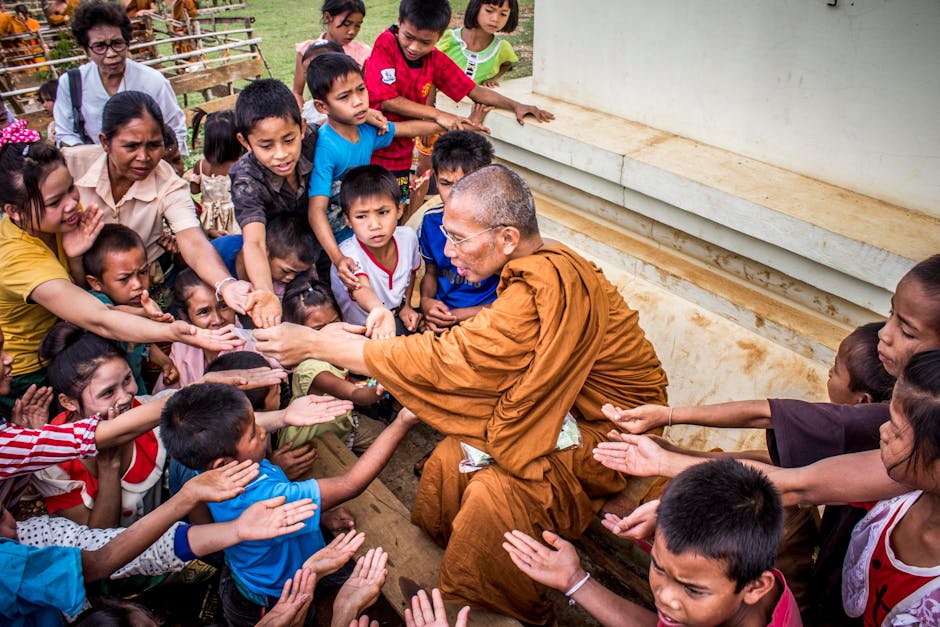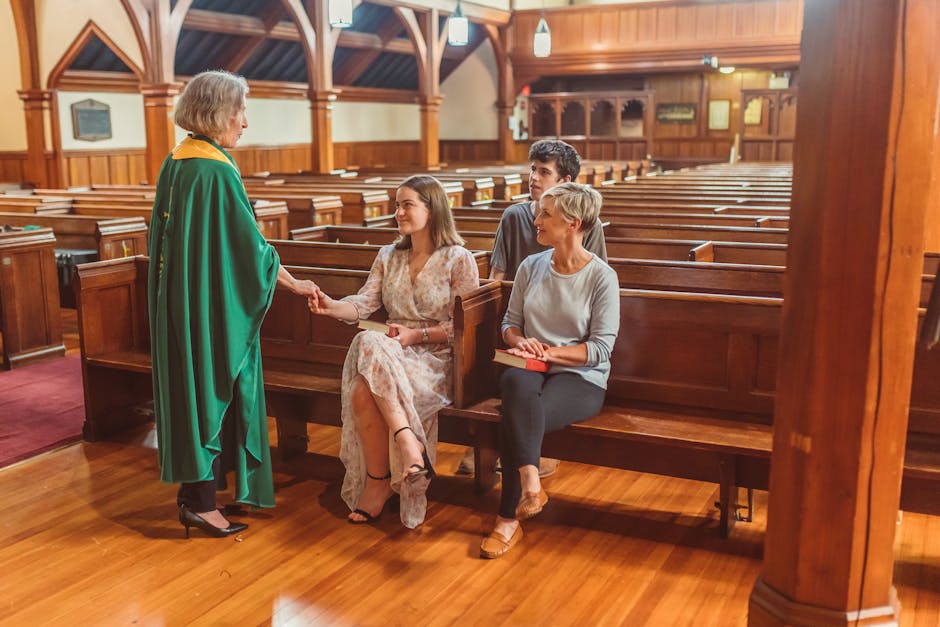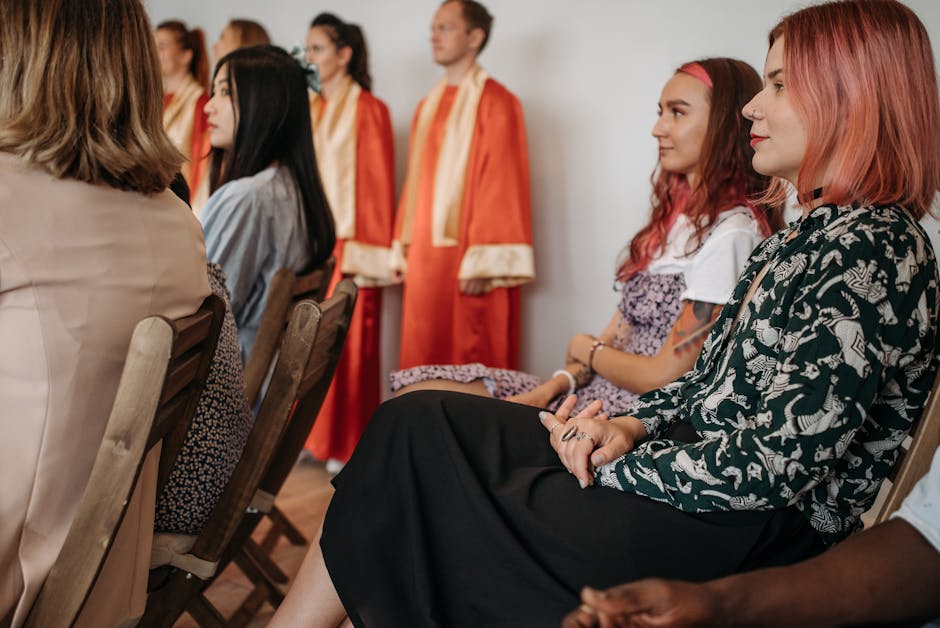Engaging Youth in Faith Communities: A Comprehensive Guide
When it comes to faith communities, engaging youth is a crucial aspect of ensuring the continuation and growth of religious traditions. Many faith communities struggle to connect with younger generations, facing challenges in adapting to evolving societal norms and technological advancements. In this article, we will delve into the intricacies of engaging youth in faith communities, exploring various strategies, practices, and insights that can help bridge the gap between tradition and modernity.
The Importance of Engaging Youth in Faith Communities

By Suraphat Nuea-on via Pexels
Before delving into the strategies for engaging youth in faith communities, it is essential to understand why this is a vital endeavor. Youth represent the future of any community, including faith-based ones. By actively involving young people in religious activities, communities can ensure the continuity of their traditions and values. Additionally, engaging youth in faith communities fosters a sense of belonging, identity, and purpose, which are essential for personal growth and well-being.
Understanding the Challenges
Engaging youth in faith communities comes with its own set of challenges. One of the primary obstacles is the changing landscape of society, with younger generations being exposed to diverse worldviews and ideologies through the internet and social media. Additionally, many youth may feel disconnected from traditional religious practices, viewing them as outdated or irrelevant to their lives. Overcoming these challenges requires a nuanced approach that acknowledges the unique needs and preferences of young people.
Building a Welcoming and Inclusive Environment

By RDNE Stock project via Pexels
One of the key strategies for engaging youth in faith communities is to create a welcoming and inclusive environment where young people feel accepted and valued. This can be achieved through various means, such as organizing youth-specific events, forming youth groups or committees, and providing opportunities for leadership and involvement in decision-making processes. By actively involving youth in the community, faith leaders can demonstrate their commitment to listening to the voices of the younger generation.
Utilizing Technology and Social Media
In today’s digital age, technology and social media play a significant role in the lives of young people. Faith communities can leverage these platforms to engage with youth effectively. Creating social media accounts, live-streaming religious services, and hosting virtual events are just some of the ways in which faith communities can connect with young audiences. By embracing technology, faith leaders can reach a broader demographic and make religious teachings more accessible to the younger generation.

By RDNE Stock project via Pexels
Empowering Youth Through Education
Education is a powerful tool for engaging youth in faith communities. By providing opportunities for religious education and spiritual growth, faith communities can empower young people to deepen their understanding of their faith and traditions. This can be done through Sunday school classes, youth retreats, and workshops that address contemporary issues from a religious perspective. By investing in the education of youth, faith communities can cultivate a new generation of informed and committed believers.
Fostering Mentorship and Role Models
Mentorship plays a crucial role in shaping the beliefs and values of young people. Faith communities can foster mentorship relationships between older, more experienced members and youth, providing guidance, support, and encouragement along their spiritual journey. By showcasing positive role models within the community, faith leaders can inspire and motivate young people to actively participate in religious activities and community service. Mentorship programs can also help bridge the generational gap and facilitate intergenerational dialogue within the faith community.
Engaging Youth in Social Justice and Community Service

By Pavel Danilyuk via Pexels
Many young people are passionate about social justice issues and are eager to make a positive impact in their communities. Faith communities can harness this energy by involving youth in social justice initiatives and community service projects. By aligning religious teachings with social action, faith leaders can demonstrate the practical relevance of faith in addressing societal challenges. Engaging youth in meaningful service opportunities not only benefits the community but also deepens their connection to their faith and values.
Embracing Diversity and Inclusivity
Diversity and inclusivity are essential principles that should guide the efforts to engage youth in faith communities. Young people come from various cultural, ethnic, and religious backgrounds, each bringing a unique perspective to the community. Faith leaders must create an inclusive environment where all youth feel welcomed and respected, regardless of their differences. Embracing diversity enriches the community’s collective experience and fosters a sense of unity and solidarity among its members.
Expert Opinions: Insights from Faith Leaders
According to Reverend Sarah Jones, a prominent faith leader, “Engaging youth in faith communities requires a willingness to adapt and innovate. Traditional methods of outreach may not resonate with younger generations, so it is essential to listen to their needs and preferences.” Reverend Jones emphasizes the importance of creating spaces where youth feel heard and valued, fostering a sense of belonging and community.
Dr. Ahmed Khan, a scholar of religious studies, highlights the role of education in engaging youth. “By providing quality religious education and engaging youth in meaningful dialogue, faith communities can empower young people to become active participants in their faith traditions.” Dr. Khan emphasizes the importance of fostering critical thinking and open-mindedness among youth, encouraging them to explore and question their beliefs.
Common Misconceptions About Engaging Youth in Faith Communities
There are several misconceptions surrounding the engagement of youth in faith communities. One common misconception is that young people are not interested in religious activities or traditions. In reality, many youth are seeking spiritual guidance and community support, but may not find traditional religious institutions appealing or relevant to their lives. By adapting to the needs and preferences of young people, faith communities can create meaningful connections with the younger generation.
Conclusion: Bridging the Generation Gap
In conclusion, engaging youth in faith communities is a multifaceted endeavor that requires creativity, adaptability, and a genuine commitment to listening to the voices of the younger generation. By creating welcoming and inclusive environments, utilizing technology and social media, empowering youth through education, fostering mentorship relationships, engaging in social justice initiatives, embracing diversity and inclusivity, faith communities can bridge the generation gap and ensure the continuity of their traditions and values. By actively involving young people in religious activities, communities can cultivate a sense of belonging, purpose, and identity among the younger generation, fostering a vibrant and thriving faith community for years to come.
As we navigate the complexities of engaging youth in faith communities, let us remember that the future of our traditions lies in the hands of the next generation. By investing in the spiritual growth and well-being of young people, we can create a more inclusive, diverse, and vibrant faith community that reflects the values and aspirations of all its members. Together, let us work towards building a brighter future for our faith communities and ensuring that our traditions endure for generations to come.




